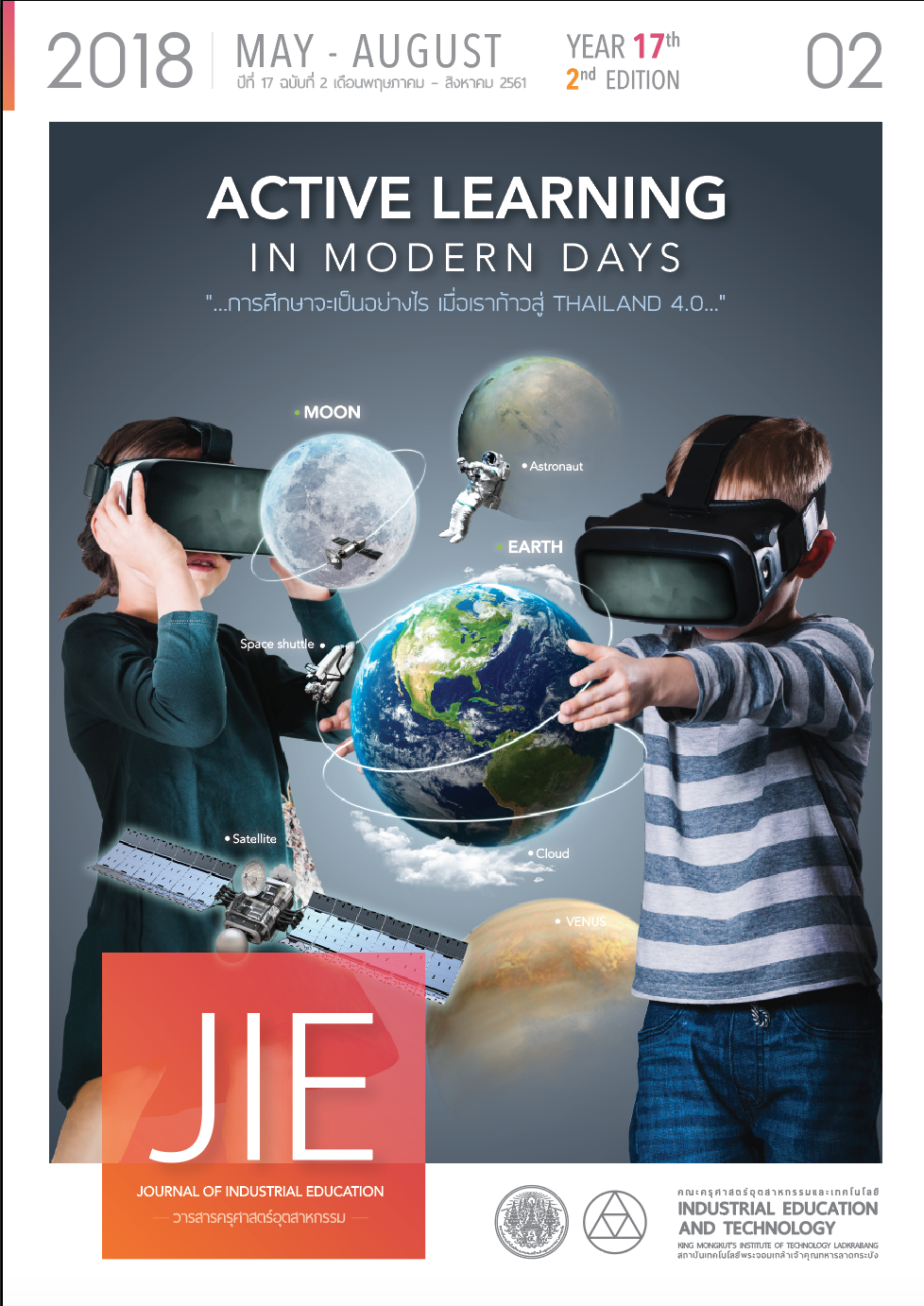THE BEST PRACTICE FOR DUAL VOCATIONAL TRAINING OF KANCHANAPISEK SAMUTPRAKAN TECHNICAL COLLEGE
Keywords:
Best practice, Dual Vocational Training, Kanchanapisek Samutprakan, Technical CollegeAbstract
The purposes of this research were to 1) identify the lesson learned as the best practice guidelines for dual vocational education and 2) establish the best practice guidelines for dual vocational education of Kanchanapisek Samutprakan Technical College. The data collection was done by studying the related documents using content analysis approach and by conducting an interview with the 68 samples of the primary informants selected using purposive sampling technique. The research findings revealed that Deming PDCA system was applied as the best practice guidelines for dual vocational education of Kanchanapisek Samutprakan Technical College along with its operation. This consisted of 4 stages as follows. 1) In terms of Planning, it included 4 sub stages: preparedness of stakeholders for the program; documentation of memorandum of understanding (MOU); communications and publicity to promote DVE curriculum to prospective students; and curriculum planning including on-the-job training. 2) In terms of Doing, this involved 4 sub stages: Students recruitment; vocational training contract agreement between stakeholders and students; students and parents orientation; and the implementation of curriculum planning and on-the-job training. 3) In terms of Checking, it consisted of 3 sub stages: supervising both in classes and workshops; assessment for each course and on-the-job training program; monitoring the process of graduation requirement. 4) In terms of Acting, this included 2 sub stages: graduate tracking system; and annual report summary.
References
[2] Ministry of Education. 2010. National Education Act BE 1999 and Amendments No. 3 BE 2010. Bangkok: Printing House, Teachers Council, Ladprao.
[3] Ministry of Education. 2010. National Education Act, BE 1999 and Amendments (No. 3) BE 2010. Bangkok: Printing House, Teachers Council, Ladprao.
[4] Office of the Vocational Education Commission. 2014. Guidelines for dual vocational education Management Handbook. Bilateral Vocational Education Center, Office of the Vocational Education Commission, Ministry of Education, Bangkok.
[5] Office of the Vocational Education Commission. 2014. Guidelines to Evaluating Educational Institutions for the Management of Vocational Education in Bilateral Systems To excellence. Bilateral Vocational Education Center, Vocational Education Commission Ministry of Education, Bangkok.
[6] YassaPattarawit KhunBuaLa. “Status of the Vocational Education Development under the Education Policy and Strategy of the Second Decade (2009 - 2016) of the Office of the Vocational Education Commission.” Journal of Industrial Education, 13 (2), p.92
[7] Santi Boonpirom. 2009. "Principles of Educational Administration". Bangkok: Printing Point Books.
[8] Met MetGarunjit 1998 "The Participation of the Board of Education in the Public School in Nakhon Ratchasima Province." Master Thesis The field of educational administration Graduate School, Kasetsart University.
[9] Office of the National Education Commission. 2002. The National Education Act, BE 1999) and the Amended (No. 2), 2002. Bangkok: Pepper Sweet Grapefruit. Mental Ganoderma 1998
[10] Prakob khunarạk. 2001. "Implementing a Deming Cycle in the Performance of School Administrators under the Office of Chonburi Educational Service Area 1." Master Thesis Educational Administration Graduate School, Rajabhat Rajabhat University.
[11] Office of the Secretary General of the Council of Education. 2006. “Study and synthesis of the school administration model, the development of the board of education and the education network of the administrators of the first generation of educational institutions.” Vocational Education Commission Ministry of Education, Bangkok.
Downloads
Published
How to Cite
Issue
Section
License
"The opinions and contents including the words in papers are responsibility by the authors."
"ข้อคิดเห็น เนื้อหา รวมทั้งการใช้ภาษาในบทความถือเป็นความรับผิดชอบของผู้เขียน"



